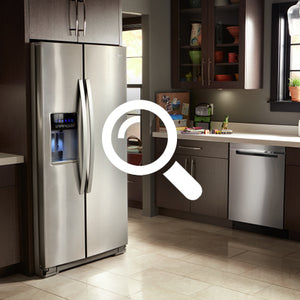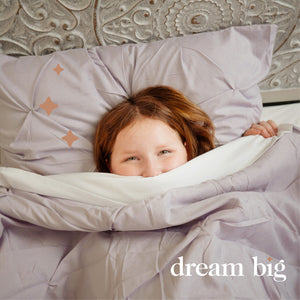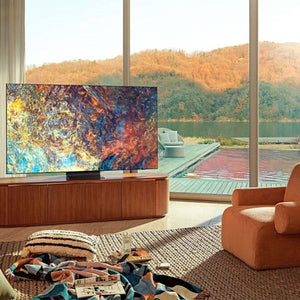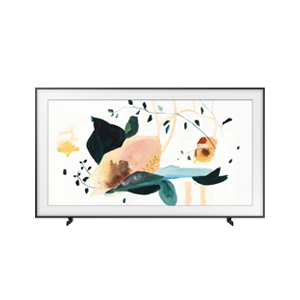Buying Guide - Cooking Appliances
COOKING APPLIANCE BUYING GUIDE
INTRODUCTION
The kitchen is often the heart of the home and nothing brings people together more than creating and sharing a meal. However, it also means that we need to choose the cooking products that will best meet not only how we cook, but where we cook.This buying guide will help you identify features and options to help you make your buying decision.
WHAT STYLE DO I NEED?
When we talk about style of range, we are not only talking about colour or finish, but the type of cooking product based on how your kitchen is constructed. Cooking products come in 3 main styles
- Built-in
- Slide-in
- Free-standing
ALL ABOUT BUILT-IN COOKTOP UNITS
Built-in cooking units include a cooktop that sits either inside your kitchen counter or in an island, and a separate oven mounted in the wall. Many people like having the space flexibility of the cooktop separate from the oven as it contributes to a nice working cooking triangle. You can also have different sized cooktops and ovens as well as different fuel types (gas or electric), all dependant on your kitchen layout. However, if your current kitchen uses a free-standing style, converting the kitchen to built-in units or even slide-in could require an extensive renovation.
Cooktops come in a variety of sizes (from 15"to 36") depending on the manufacturer and model with 30" models being the most common size. Cooktops come with different cooking surfaces types from cast-iron grates for gas models to coil and ceramic glass for electric models, giving you the flexibility to customize your kitchen for that special look and function.
Wall oven sizes range from 24" to 30" with some manufacturers offering double oven capability. You should always verify the inside dimensions of the oven to ensure that your favourite roaster and dishes will fit properly. If you are replacing an existing wall oven, you may want to consider looking at the Whirlpool Corporation’s Flexible Install (FIT) system. The FIT system takes out the guesswork of how to install a single or double wall oven by using adjustable feet to adapt the oven height within the cabinetry to ensure a perfect fit every time.
Slide-in ranges do not have finished sides like a free-standing and are designed to slide into spaces of your kitchen cabinetry. They also have their control mounted on the front instead of the back of the stove which allows easier access by not having to reach over hot elements. However, if you are moving from a free-standing, you will need to ensure that your backsplash will not require alterations. Although slide-ins range from widths of 30" to 48", the key dimension to consider is the depth as you will want your stove to be flush with your kitchen cabinets.
Free-standing is the most common of kitchen ranges. It is a totally self-contained unit with finished sides that will fit anywhere in your kitchen. Along with a variety of cooktop styles, sizes vary from 20" width for compact size to 36" for larger kitchens with 30" being the standard. However, the main distinguishing characteristic of the free-standing range is the placement of the controls – they are found at the back of the stove, mounted on a raised platform that also doubles a backsplash.
Double oven feature - Have you ever tried cooking a turkey and a pie at the same time in your oven? It can be quite the juggling act! Several manufacturers now offer double ovens where you can cook your food at two different times and temperatures. Double ovens include a standard-sized oven on the bottom and a smaller oven on the top. Many people believe that they will not use the smaller top oven, however did you know that 80% of every day cooking will fit in the smaller oven? Think of the energy you can save!
TYPES OF ENERGY SOURCES | GAS | ELECTRIC | INDUCTION ARE RIGHT FOR ME?
Choosing the type of energy source for your cooking is dependant not only on your cooking style, but also your home. Let’s look at each of these in detail.
Gas is considered the “Cadillac®” power source for cooking.However when you purchase a slide-in or free-standing model, they are usually dual fuel. This means that the cooktop is gas and the oven is electric. If you require your oven to also be gas, advise your salesperson so they can ensure you order the right model and connection kits.
There are several advantages of using a gas cooktop over an electric one. When you are cooking, you can visually identify how much heat a pan is getting simply by looking at the flame – this allows you precise control. Temperature control is instant rather than having to wait as you do with an electric cooktop, resulting in quicker cooking times. Gas also has evenly distributed heat with less likelihood of scorching your food. The burners on gas cooktops are rated in British Thermal Units (BTU’s) where one BTU will raise the heat of one pound of water by one degree F.
Gas cooktops usually have a number of burners with different ratings that fall within the range of 3000 to 17 000 BTUs. A burner with a lower BTU rating is best for simmering or keeping food warm, a medium range is good for frying and a burner with higher BTUs is great for boiling water or searing meat. When choosing a gas cooktop, you want to find one that has a good range of low, mid and high BTU burners to provide the best flexibility for your cooking. For even heat distribution, gas stoves work best with stainless steel, cast iron and aluminum cookware. Using Pyrex® or ceramic cookware does not conduct heat transfer as well. Finally, when choosing gas, you want to ensure that you have proper gas lines and hookups installed in your home in addition to having proper outside venting which is required by law.
Electric ranges and cooktops come in a variety of cooking surfaces with different number of elements. Electric stoves are less expensive to purchase than gas stoves but can cost you more in the long run as gas is typically cheaper to run than electricity. Cooking elements are rated in watts which can serve different purposes. For example a dual front element that can expand from 6" to 9" may have a 3000W rating, while a rear 6" element can be 1200W and a centre-rear warming element can have a rating of 100W.
Coil top is the oldest style of cooking surface found in electric stoves. It contains a circular heating element that is encased in drip bowl to catch food and spills. Coil elements provide “direct heat” but is also prone to hot spots and burnouts. When food falls on the coils the element burns the debris and therefore burns the element. This weakens the element and eventually it burns out and requires replacement. Although it is harder to maintain, the electric coil provides a consistent heating source that can be used with all types of cookware, however its popularity has waned over the years due to difficulty in keeping it clean and aesthetics in the kitchen.
Smooth top - The electric smooth top contains a one-piece ceramic glass surface with radiant elements built underneath. One of the key advantages of the smooth top is the ease of wiping away spills due to its flat surface. With the elements “hidden”, the chance of hot spots and burnouts is eliminated. To avoid potential damage, certain cookware should not be used on a smooth top. Cast iron cookware, as well as ceramic and stoneware, can leave scratches. Skillets with round or non-flat bottoms (wok style) do not to distribute heat as effectively. Regardless of the type of cookware, you should avoid dragging the vessel on the smoothtop to avoid scratching. Many electric cooktops allow you the flexibility to modify the size of the element based on the size of your pan. Look for cooktops that have multiple circles on an element to signify flexibility.
Induction technology uses a magnetic field to heat food instead of the flame of a gas burner or electric element. Here are the top three benefits: 1. Energy efficiency – an induction cooktop runs at about 90% efficiency compared to 50% for electric ranges and 40% for gas ranges. 2. Safety – the cooktop does not get hot which makes it safe to touch without burning your fingers. This is great feature with children nearby. And because the cooking surface is not hot, any food that spills over does not burn and cause a cleanup issue. 3. Temperature control – like gas burners, the response time is immediate when you adjust the temperature.
For induction to work, it requires cookware to contain ferrous metals such as cast iron or stainless steel, basically any metal that a magnet would stick to. Glass, ceramic or aluminum cookware are not compatible with induction cooktops.
WHAT IS THE TRUTH ABOUT CONVECTION, DO I REALLY NEED IT?
Convection is a great feature - However in order to understand how it may help, let’s understand how an oven actually works. A typical electric oven uses two coil heating elements to keep an even heat. The bottom element has variable temperature capability that is controlled by a thermostat from 150°F-450°F and is ideally suited for baking. The top element is used for broiling and will cook at its highest temperature (around 500°F) until you turn it off. When you pre-heat an oven the two elements will heat up until it reaches the desired temperature (which is why you need to preheat the oven so your food does not burn on the bottom with the high heat). When the temperature in the oven lowers, your oven will turn the elements on and off to bring it back to the proper setting. These elements provide “direct heat” which means that the bottom of your pan and the top of your food is getting more heat than the rest of the oven. This is why you are constantly looking to see if the bottom of your food is burning or the top is getting too brown. Convention is designed to ensure that your oven temperature remains at an even heat and circulates the heat for better cooking. Convection technology uses a fan to circulate air around the oven which promotes faster cooking.
Regular convection models use a fan located at the back of the oven to circulate the hot air created by your bake/broil elements around your food. When hot air is blown around food, as opposed to merely surrounding it, the food tends to cook quicker and more efficiently.
True convection technology include a third heating element with the fan. This provides uniform temperature control and eliminates the direct heat from the top and bottom element. Because of this air circulation, you can cook up to 3 racks at the same time without compromising quality, saving both time and money.
COOKING TIP - Important to note that cooking with convection decreases cooking time and therefore may change either the time or temperature that you currently use for your recipes. Experiment with your favorite recipes by cooking them at a slightly lower temperature and for a slightly shorter time than you normally would when you get your new range. Look for models that have the option to turn convection on or off.
KEEPING YOUR OVEN CLEAN
There is nothing more annoying than the smell of burning food when cooking. However, grease and food residue is also a safety hazard. Keeping your oven clean will reduce the chance fire. There are several options available to maintain the look of “new” and clean.
Easy-clean ovens have an interior surface that is exactly that – easy to clean. It still requires chemical cleaning agents and some elbow grease, but the surface is coated to make it easier. Hidden bake elements will also make this process easier as you will not need to work around that bottom element.
A self-clean range locks the oven door and raises the oven temperature to a between 800 and 900°F to incinerate any spills and food. Upon completion, you need only wipe out the ashes. Note that, while in the self-clean mode, the whole stove is inoperable. Self-clean ovens are great but a drawback is that it takes a long time and it causes odor in the home (burning smell). It also takes a large amount of energy and generates a lot of heat.
Steam-clean is an option on some brand models. Steam clean ovens have a small dip in the bottom of the oven. You place 1 ½ cups of water into this area and press the steam clean button. It heats up the water and loosens the debris that is in the oven so it can easily be wiped away. It is a very low heat (not like self-clean temperatures). The intent of steam clean is to reduce the frequency of having to do self-clean. It only addresses debris that is on the bottom of the oven, not on the sides or top (i.e. splatter).
FEATURES
There are several features offered on today’s cooktops and ovens that you may not be familiar with. Let’s take a look at some the features and functions available:
ANALOG OR DIGITAL CONTROLS
Analog uses dial controls where digital uses push button controls.
BRIDGE ELEMENT
Available on smooth top cooking surfaces where the space (or bridge) between two elements can be used to heat oversize pots, pan and roasters.
CHILD LOCK
A control lock is available to prevent unsupervised use.
CLOCK DISPLAY/TIMER
Besides serving as a clock, the timer allows you to program what time the oven comes on, for how long and at what temperature.
DELAY BAKE OPTION
Starts heating the oven at a predetermined time.
DELAY CLEAN OPTION
Starts cleaning the oven at a predetermined time.
HIDDEN BAKE ELEMENT
Helps maximize space inside the oven to accommodate large cookware items.
HOT SURFACE INDICATORS
Light displays when a burner is still hot to the touch, whether the burner is off or on.
KEEP WARM SETTING
A separate element that allows you to keep food warm.
OVEN WINDOW/LIGHT
Allows to you to view the progress of your cooking without having to repeatedly open the door and lose heat.
SABBATH MODE
Safely maintains a temperature for an extended period of time in order to comply with kosher cooking practices.
TEMPERATURE PROBES
Allows you to check the temperature of meat as it cooks and notifies you when the desired temperature is reached.
WARMING DRAWER
Keeps side dishes hot and at the proper consistency until the rest of the meal is ready to be served.
















